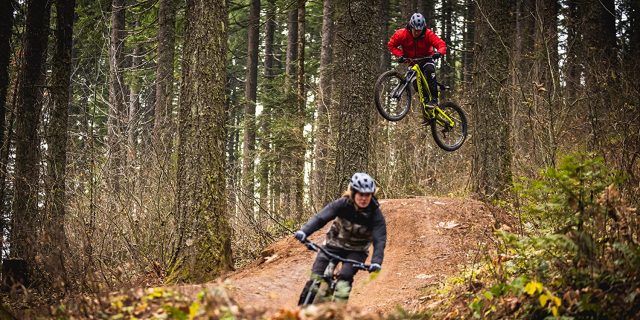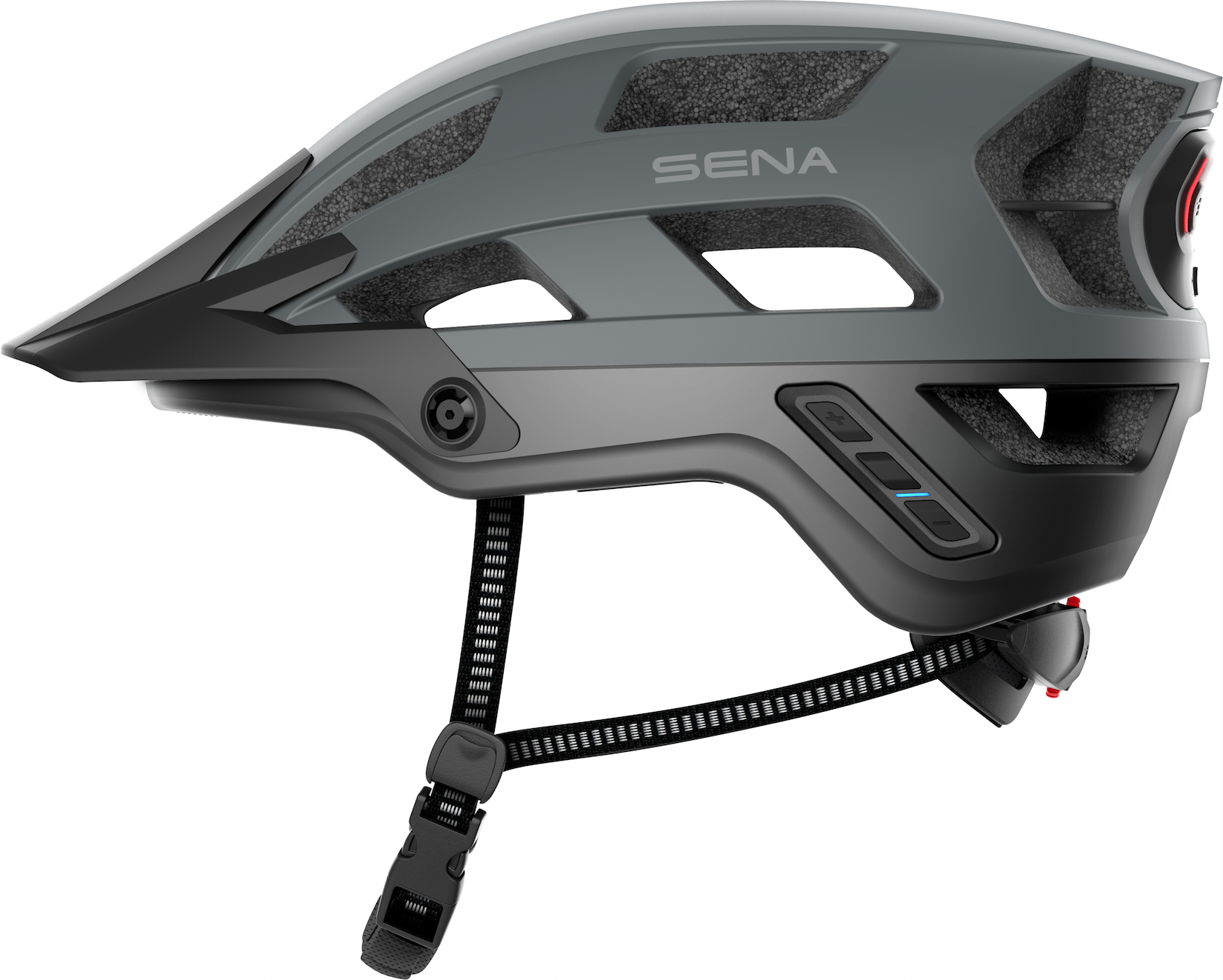I’m surprised by how rarely helmets are discussed in the cycling community when you consider they’re such a hot topic in the motorbike world. I remember doing my licence and the tutor talking us through some of the horrific motorcycle accidents that happen at low speeds and realising I was frequently going much faster on my pedal bike. The bottom line is helmets save lives and should be worn. I assume that part of the problem is that many riders traditionally considered them poor fitting, hot, and heavy. However, those days are long gone, and instead, you’ll find quality protection is light, breathable, comfortable, and pretty stylish. As a result of the digital revolution, bicycle helmets have started to integrate tech, and Sena’s new offerings might be the best yet.

Sena is no stranger to helmet technology and has been a pioneer in the motorcycle industry since 1998. They’ve now turned their hand to the cycling market with a range of Bluetooth-integrated helmets for road, hybrid, and trail riding. We’re focusing on the M1 and M1 Evo, as these models are best suited for adventure cycling. The Evo is the premium option, but it’s a no-brainer considering the marginal price difference (M1: $139, Evo: $159). Both helmets incorporate quick charging, built-in speakers/microphone, an FM radio, taillight, smartphone connectivity, a visor, are noise cancelling, and constructed of high-grade polymer plastic. There’s no mention of MIPS (a brain protection system used in many premium helmets), which isn’t to say this won’t keep you safe, but I do feel reassured when featured.

The most notable difference between the two models is the Evo boasts Sena’s Mesh technology, which allows a ‘near-unlimited’ number of connected riders without needing to pair devices (the M1 limits comms to four users). Moreover, if you want to connect with a different group of cyclists, the Evo incorporates nine built-in channels, meaning you can switch between various riders on different frequencies. The M1 has a talk time that’s almost double that of the Evo (M1: 18 hours, Evo: 10 hours), which should be noted if you’re planning multi-day/bikepacking trips (the M1 does take an extra 30 minutes to fully charge). I’ve not tested either helmet yet, but I do have some initial thoughts.
The communication technology is very impressive, but it relies on multiple riders all possessing either the M1 or Evo helmet (i.e., you’re going to have to convince your partner, household, friends, club, etc., to also purchase). It would be cool if an insert were offered that could be mounted into any helmet (Sena should at least make the comms systems between the M1 and Evo compatible). Nevertheless, this will not deter many riders, as I’m confident enthusiasts would happily invest to converse with their regular riding groups. Furthermore, I feel communication is an added bonus to an already generous set of features. Sure, this is a premium product, yet the price point is comparative to many other quality alternatives that have zero tech. So, what are the practical uses of such a helmet?

I can’t count the number of bad headaches and sore throats I’ve had on windy days or when roads/trails prevent riding side-by-side. The effort required to be heard can be genuinely draining when you’re riding all day, and the thought of wearing a helmet with inbuilt comms sounds glorious. On steep descents, you have limited time to warn riders behind of a sudden obstacle; consequently, this immediate form of communication could prevent accidents. The inbuilt speakers are a welcomed addition and allow you to listen to music without completely jeopardising your awareness (something to be taken seriously when sharing the road with traffic). I also applaud the rear taillight feature and think it should be configured into all helmets, as there’s less likelihood of a high-mounted light being obstructed. The tech does add some additional weight when compared to a similar stock helmet, yet it’s not substantial enough to have a negative impact.
If the integrated tech performs as described, this would be the logical evolution of the helmet and something that a primitive man like myself would love on my next bikepacking adventure.
Our No Compromise Clause: We carefully screen all contributors to make sure they are independent and impartial. We never have and never will accept advertorial, and we do not allow advertising to influence our product or destination reviews.


